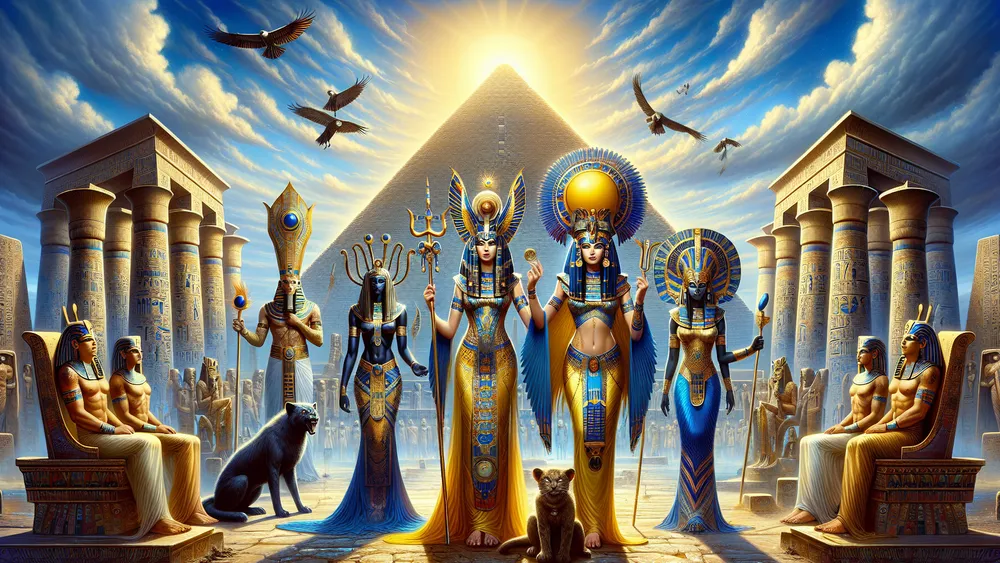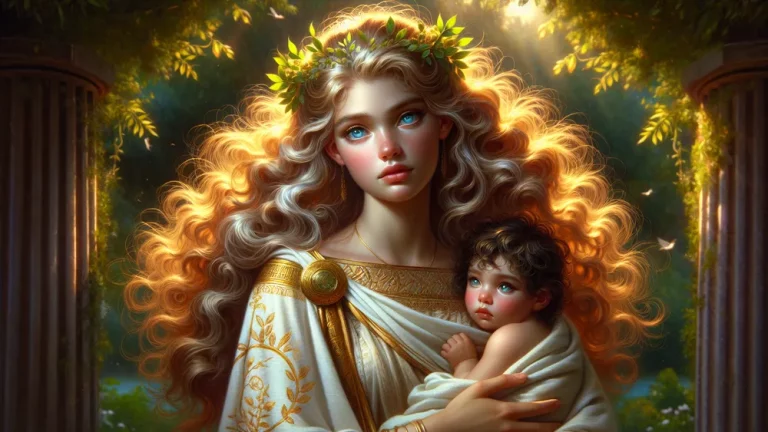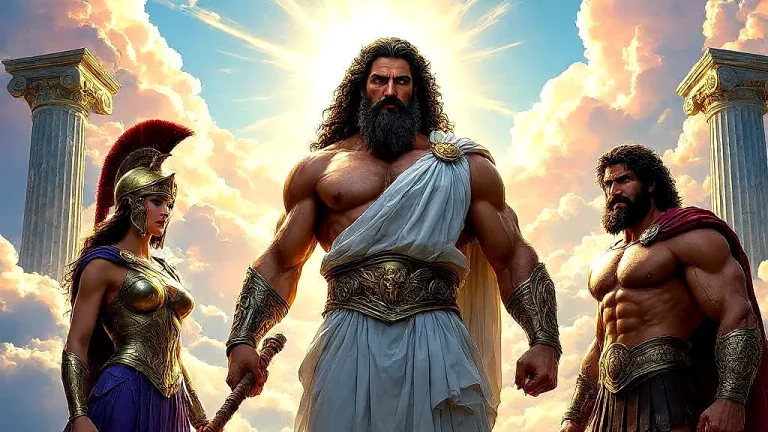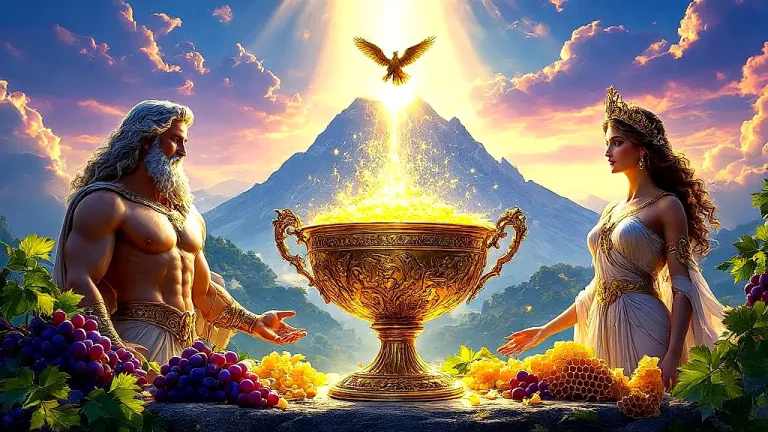Important Numbers In Egyptian Mythology
Welcome to our look into the top 15 important numbers in Egyptian stories. Numbers in ancient Egyptian culture weren’t just math symbols, they held deep symbolic meanings that spread into their stories, ceremonies, and daily life. Imagine how we use numbers now to mark important days, measure time, or even in superstitions – old Egyptians did the same way, but with a deeper, often spiritual point.
Key Points:
- Numbers in Egyptian mythology held symbolic meanings in stories, ceremonies, and daily life.
- Each number from 1 to 365 played a key role in how ancient Egyptians viewed the world.
- Numbers like 1 symbolized unity and the start of everything, while 365 represented time and eternity.
- Key connections of numbers in Egyptian mythology include concepts like togetherness, balance, wholeness, and protection.
- Important numbers like 3 (representative of stability and trinities) and 7 (associated with magic and spirituality) held specific significance in Egyptian myths.
- Numbers also reflected concepts like creation, cycles, control, fairness, and eternal life in Egyptian stories.
- Egyptian numerology integrated with religious, architectural, and astronomical systems, serving practical and spiritual purposes.
In this blog post, you will get into the interesting world of Egyptian number meanings, uncovering how each number from 1 to 365 played a key role in how they saw the world. From the one symbol by number 1 to the never-ending cycle shown by 365, each number has a different tale.
As we go through these numbers, you will find their links to creation stories, gods, and cosmic rules, and this will give a full view of their importance in Egyptian stories.
Important Numbers In Egyptian Mythology: Overview and Key Facts
| Number | Meaning | Key Connections | Examples in Stories |
|---|---|---|---|
| 1 | Togetherness and the Start of Everything | Unity, First Beginnings | Stories about creation, the single point where everything started |
| 2 | Opposites and Balance | Two Sides, Harmony | Ma’at (order) and Isfet (chaos) |
| 3 | Important Group of Three | Holy Trinity, Stability | Three gods (Osiris, Isis, Horus), natural cycles |
| 4 | Wholeness and Building Blocks | Completeness, Foundation | Four main directions, four sons of Horus, making pyramids and temples |
| 5 | Safety and Strength | Protection, Power | Five fingers of the hand, five elements, protective charms |
| 6 | Making Things and Growing | Creation, Birth | Six days to make the world, six directions (north, south, east, west, up, down) |
| 7 | Magic and Holiness | Enchantment, Spirituality | Seven forms of certain gods, seven gates to the underworld, seven special oils |
| 8 | Order and Peace Everywhere | Big Order, Harmony | Ogdoad (eight gods linked to making the world), building designs |
| 9 | Group of Nine and All Done | Divine Fullness | Ennead (nine gods in stories about Heliopolis) |
| 10 | Final Touches and All Things Done | Perfection, Completion | Ten plagues of Egypt, ten fingers and toes, measuring systems |
| 12 | Time Systems and Control | Cycles, Control | Twelve hours of the day and night, twelve months of the year, twelve gods of the Duat |
| 13 | Change and Beginning Again | Transformation, Rebirth | Thirteen steps of the soul’s journey in the afterlife, funeral writings |
| 18 | Life and Success | Vitality, Good Life | Eighteen enemies of Egypt, eighteen steps of the pyramid, art and buildings |
| 42 | Fairness and Real Things | Judgment, Truth | 42 judges of Ma’at, 42 negative statements, weighing of the heart event |
| 365 | Days and Forever | Time, Never-ending | 365 days of the solar calendar, 365 gods linked to each day, religious events |
Top 15 Key Numbers in Egyptian Myths
Now, let’s look into certain numbers that mean a lot in Egyptian stories. They show special roles and symbol meanings. First, we check out the numbers. Also, in these stories, they show unique roles. They are very special. Look at these numbers.
1. The Number 1: Oneness and the Start of Everything
In Egyptian myths, the number 1 has deep meaning as it means unity and the first starts of everything. It is the single point from where all things began. This is a key idea in stories about making the world, showing the beginning from a single place. The god Atum is believed to make himself from chaotic waters, showing the idea of one start.
Also, this idea of unity is not just a number but a basic idea that shows how everything is connected in the world.

The number 1 in Egyptian myths symbolizes unity and the origin of all creation, emphasizing how everything is interconnected.
2. The Number 2: Opposites and Harmony
In Egyptian stories, the number 2 means two sides and being balanced, like day and night or light and dark. It is key in their beliefs. They saw Ma’at and Isfet, order and chaos, living together in balance. The Ma’at means truth and order. Isfet means disorder and chaos. These two are not adversaries. They are needed together.
For example, the balance between Ma’at and Isfet is similar to how a scale needs equal weights on each side to stay balanced. This balance idea is basic in Egyptian stories, showing how two sides need each other and make balance.

3. The Divine Trio
In Egyptian stories, the number 3 is respected. It shows holy fullness and steadiness, often in groups of three gods. One well-known instance is Osiris, Isis, and Horus. Osiris is the god of the afterlife, Isis is the goddess of magic and motherhood, and Horus is the god of the sky. They form a powerful trio that shows the cycle of life, death, and rebirth.
This three-part structure appears not only in gods but also in nature, like the three seasons of their calendar (Akhet, Peret, and Shemu), which relate to farming. So, the number 3 means a balanced and firm structure, like a three-legged stool that stays steady anywhere. This idea of a divine trio shows how important interconnectedness and harmony are in their world.
4. The Number 4: Wholeness and Building Blocks
In Egyptian stories, the number 4 is a strong sign. It means wholeness and base. The four main directions – north, south, east, and west – show the whole world. They give a sense of wholeness and direction. In the same way, the four sons of Horus guard the canopic jars. They protect important body parts in life after death.
The number 4 is also important in building pyramids and temples. The four sides line up with the main directions. This keeps them steady and balanced. The idea of wholeness and base can be like the four legs of a table, which keep it balanced and supported, or the four seasons that finish a year’s cycle.
Here are some key aspects where the number 4 is significant:
- The four main directions: North, South, East, and West.
- The four sons of Horus: Imsety, Hapy, Duamutef, and Qebehsenuef.
- The four sides of pyramids and temples, which line up with the main directions.
5. The Number 5: Safeguarding and Strength
In Egyptian stories, the number 5 is deeply linked to protection and power. It shows strength and protection abilities in many life parts. Just like how five fingers work together to hold and protect, the number 5 represents unity and strength in shielding. The old Egyptians noticed five important elements – earth, water, air, fire, and spirit. These elements together build the world and give a protective balance.

For example, protective charms often included the number 5. The Eye of Horus had five parts, each part meant for protection and healing. This idea of guarding and strength is like how a hand shields and defends or how the five elements build a balanced and protected world.
6. The Number 6: Making and Growing
In Egyptian stories, the number 6 is a strong sign. It shows the steps of making and growing, which are basic to life. The six days of making in some stories show this number’s value in creating the world. Each day adds to the building of a complete and working universe. Also, the six ways – north, south, east, west, up, and down – cover all space, showing the all-covering nature of making.
This is like the six sides of a cube; they form a complete and stable shape, or the six petals of a flower which signify growth and blooming. The number 6, therefore, shows the core of making and growing, demonstrating how creating and expanding are important to the balance and harmony of everything.

The number 6 symbolizes creation, growth, and balance in Egyptian stories, representing the essential steps of making and expanding in life.
7. The Number 7: Enchantment and Holiness
In Egyptian stories, the number 7 has deep magical importance. It’s often linked to magic and spiritual stuff. The number 7 is seen as a link between the world and the divine. It shows a connection to higher worlds. For example, some gods have seven forms. Each form shows different parts of their godly nature.
The seven gates of the underworld, which souls must pass in their journey after death, mean the trials and changes needed for spiritual rise. Also, the seven holy oils used in ceremonies show this number’s value in holy actions. These oils mean cleaning and godly help. Think of the seven days of the week, structuring our time and routines, giving order and rhythm.
Here are some key aspects where the number 7 is significant:
- The seven forms of certain gods.
- The seven gates of the underworld.
- The seven holy oils used in ceremonies.
8. The Number 8: Universal Order and Peace
In Egyptian stories, the number 8 is a strong sign of universal order and peace. It’s important. The Ogdoad, a group of eight gods, shows this idea, with each god and goddess showing different parts of making, like water, air, darkness, and endlessness.
These gods work together to keep the balance of the universe, much like how the number 8, when turned on its side, forms the infinity sign. It stands for endless order and peace. Also, the number 8 is used a lot in building layouts, like the setup of temples and holy spaces, to show this world order.

For example, the balance and order found in these structures are made to copy the peaceful way of the universe, giving a feeling of peace and stability. This idea is like how a well-planned building stands strong and balanced, making sure it works well and looks nice.
9. The Number 9: The Great Nine and Total Completeness
In Egyptian stories, the number 9 is a deep sign of godly wholeness, which shows the end of making and the best of the universe. Key to this idea is the Ennead, a group of nine gods in Heliopolitan beliefs. It includes well-known gods such as Atum, Shu, Tefnut, Geb, Nut, Osiris, Isis, Set, and Nephthys.
These gods together show the whole universe, each having an essential role in keeping cosmic order and balance. The number 9 appears in many stories and ceremonies, showing the end and wholeness of rounds. These gods work together to form a peaceful and complete whole. For example, nine months of human pregnancy are similar, where the steps of making end with the birth of new life, showing wholeness and completeness.
The godly wholeness is copied in the structure of the Ennead, where each god’s qualities and jobs link to make a complete whole, just like pieces of a puzzle that make a full picture.
10. The Number 10: Final Touches and Wholeness
In Egyptian stories, the number 10 is a strong sign of the best and wholeness. It shows the last touches that make things whole. For instance, the ten disasters in Egypt clearly shown this idea, seen as final god actions that led to freedom for the Israelites. In another way, the number 10 is like the human body.
Ten fingers, ten toes. It shows physical wholeness and use. Also, the number 10 is important in different counting systems, which shows its role in making order and exactness. The ancient Egyptians used a counting system for counting and measuring. This shows the number 10’s value in getting exact and ordered results.
This idea of wholeness and best can be compared to how a well-made piece of art is only whole when every part is in place, making a peaceful and finished work.
The Number 12: Time Cycles and Control
In Egyptian stories, the number 12 is a strong sign of rounds and control. It shows the smooth moving of time and the setup of the universe. For example, the twelve hours of day and night, which the ancient Egyptians used to divide time into easy parts, showed this. This made sure daily life was even and controlled.
Similarly, the twelve months of the year show the round nature of time, helping farming and holy festivals. The number 12 also has a big holy meaning. As seen in the twelve gods of the Egyptian underworld, these gods control the different parts of the afterlife, keeping order and watching the path of souls.
Think about how our modern calendar with its twelve months helps us plan our lives and think ahead. It gives us control and exactness. So, this planned way of time and control is like how the ancient Egyptians used the number 12 to bring order and peace to both their world and their holy places.
12. The Number 13: Change and New Beginnings
In Egyptian stories, the number 13 is often linked with change and new starts. This number shows the idea of change and the chance for new life. For example, the thirteen steps of the soul’s journey, which different trials and changes happen, are clearly shown by this idea.
These steps are carefully explained in death writings, like the Book of the Dead, which show the dead through the underworld and make sure of their successful new life into the afterlife. Think of the number 13 like a baker’s dozen, where an extra step is taken to go beyond usual, bringing something new and surprising.
This idea of change and new starts is key to the number 13’s sign, showing the ancient Egyptians’ thought in the round pattern of life and the ongoing possibility for refreshing and change.
13. The Number 18: Vitality and Success
In Egyptian stories, the number 18 is a strong sign of energy and doing well. It shows the growing of life and getting money. For instance, the eighteen enemies of Egypt, often shown in art, represent challenges that must be beaten to make a society stable.
This number is also seen in the eighteen steps of the pyramid, especially in the Step Pyramid of Djoser, which show the climb towards forever life and doing well in the afterlife. The number 18, common in Egyptian art and building, shows ideas of life, growth, and prosperity.
Think of how being 18 is often viewed as the start of adulthood in many cultures, showing a move to a life with more duties and a chance for doing well.
So, this idea of energy and doing well is key to the number 18’s sign, showing the ancient Egyptians’ thought in the value of beating problems and trying for a wealthy and happy life.
| Aspect | Description |
|---|---|
| Eighteen Enemies of Egypt | Represent challenges to be beaten for a stable society |
| Eighteen Steps of the Pyramid | Show the climb towards forever life and doing well in the afterlife |
| Use in Art and Building | Shows ideas of life, growth, and having money |
14. The Number 42: Fairness and Reality
In Egyptian stories, the number 42 has deep meaning. It shows fairness and reality. The 42 judges of Ma’at, who watch over the heart weighing event in the afterlife, clearly show this idea. Each judge stands for a specific part of truth and fairness, making sure that the soul of the dead is judged fairly.

The 42 negative statements, or words of innocence, are said by the dead to confirm their cleanliness and follow Ma’at, the rule of truth and universal order. Think about the number 42 in today’s courts, like a group of people together making sure of a fair and just decision.
This way of fairness and reality is key to the number 42’s sign, showing the ancient Egyptians’ thought in the value of living a truthful and just life to get a good judgment in the afterlife.
15. The Number 365: Days and Forever
In Egyptian stories, the number 365 is a deep sign of time and forever. It shows the round nature of life. The 365 days of the solar calendar, which the old Egyptians used to organize their farm work, holy rituals, and daily activities, clearly show this time idea. Each day had a specific god, making a holy structure that connected the passing of time with the never-ending presence of the gods.
For example, think of the number 365 like the days in today’s year, which help us track time and organize our daily lives. The number 365 also played a vital role in religious celebrations, where certain days were marked for showing respect to specific gods, making sure the holy order was kept all year.
This way of looking at time and forever is a key part of the number 365’s sign, showing the old Egyptians’ thought in the connection of time-related and forever things, and the never-ending cycle of life, death, and new life.
FAQs
1. What is the significance of numbers in Egyptian mythology?
The significance of numbers in Egyptian mythology lies in their ability to convey deeper meanings and concepts related to the cosmos, gods, and the natural world.
2. How did the ancient Egyptians use numbers in their daily lives?
The ancient Egyptians used numbers in their daily lives for various practical applications, including architecture, astronomy, and religious practices.
3. Are there any modern interpretations of Egyptian numerology?
Modern interpretations of Egyptian numerology often involve analyzing ancient symbols and numbers to uncover hidden meanings and spiritual insights.
4. What are some common misconceptions about Egyptian numerology?
Some common misconceptions about Egyptian numerology include the belief that it is solely based on mystical or magical practices, rather than its deep integration with religious, astronomical, and architectural systems.







